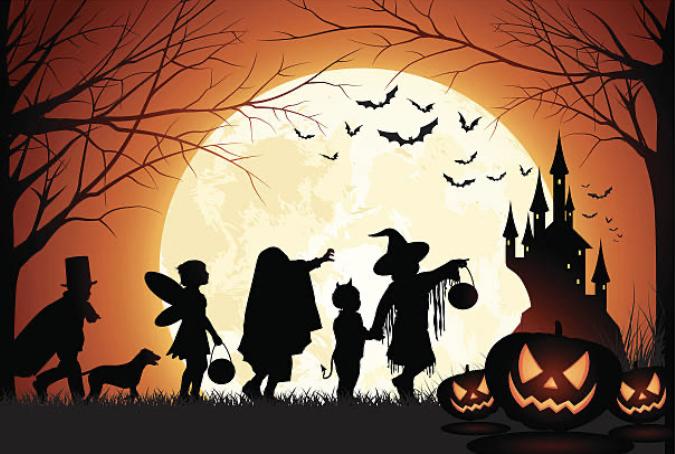By Oscar Mata
Halloween is widely recognized as one of America’s most popular public rituals. Although public schools have yet to recognize it as a holiday, don’t underestimate how beloved this day has become. In fact, it’s gotten to the point to where Halloween is the second most celebrated holiday in the nation, closely followed by Christmas.
It is largely because of Halloween’s being heavily promoted each year around the U.S. that Americans consider Halloween to be a particularly “American” holiday. But that idea couldn’t be farther from the truth.
The fact is, Halloween is considered a special day in many countries around the world, albeit in different ways. The one similarity many variations of Halloween have in common are the religious and non-religious origins of the day’s events.
Halloween can be traced both from the ancient Celtic harvest festival called Samhain, as well as from certain ancient Aztec and Catholic ceremonies honoring the dead. (Interestingly enough, the Chinese day for honoring ancestors and the dead is called the “Hungry Ghost Festival” and normally takes place during late summer months.)
The Celts, who lived 2000 years ago in what is now present day ireland, celebrated their New Year on November 1st. This day signified the end of their summer harvest, and the beginning of the cold winter. The Celts also believed that on the night before the new year, the ghosts of the dead returned to walk the earth. To mark the arrival of Samhain on October 31, Celtic Druids built large sacred bonfires, and to protect the people from bad luck and evil influences, offered crops and animals as sacrifices to Celtic deities. As part of this annual event the Celts wore costumes, and attempted to tell each other’s fortunes.
In the United States and Canada the spookiest part of Samhain (ghosts and demons returning to walk the earth) was seen as an appropriate prelude to the uplifting “All Saints Day” celebrated by many Christian sects. Saints were “hallowed” or holy people, capable of calming ghosts and demons; so this scary evening right before many Christians honor their saints and departed relatives, was named “All Hallow’s Eve.” In time, that name got shortened to “Hallow’een!” But let’s look at how other countries came up with their own variations.
Mexico’s Dia de los Muertos is one of the variations on Halloween created by combining Aztec and Catholic traditions. It’s celebrated in much of Latin America, as well as by Spain. The holiday isn’t just a single day of festivities, but a three day celebration which begins on the evening of October 31. These days are dedicated to honoring the dead, who are believed to have returned to altars or special shrines built by families.
Patterned after ancient indigenous traditions, altars are adorned with the deceased relatives’ favorite foods and drinks, along with flowers, and their images or photographs. At the end of the ceremonies, candles and incense are burned to help guide the dead back to their spiritual resting place. This version of Halloween is the most emotional of the bunch, considering it’s a day dedicated to remembering deceased loved ones.
Although the British stopped celebrating All Hallows’ Eve as Martin Luther’s Protestant Reformation began to spread, a new holiday emerged close to the traditional Hallow’een. On November 5th, Guy Fawkes Day was instituted to commemorate the execution of the controversial English traitor, Guy Fawkes.
Fawkes was a member of a dissident Catholic group that as a form of revolt, attempted to blow up England’s parliament building. So on the anniversary of his execution on November 5,1606, England encouraged the public to build bonfires to burn effigies of the Catholic pope.
Two centuries later, the English replaced representations of the Catholic pope with dolls of Guy Fawkes. Today, some children celebrate the day by walking the streets carrying an effigy, and asking for money. This odd British tradition now bears a close similarity to America’s Halloween.
Surprisingly, Ireland (the place where Samhain originated), celebrates Halloween much the same way it’s celebrated here in the United States. All over the country, children dress up in costumes and go door to door asking for treats. After this trick-or-treating, many people attend parties where they play Halloween-themed games. These games include bobbing for apples, treasure hunts and a game called snap-apple. For this game, players try to bite a hanging apple off of a tree or doorframe. In rural areas however, some people still have bonfires in memory of old pagan practices.
As you all know, Halloween 2019 is fast approaching. In the end, it really doesn’t matter how or where you gather to enjoy it—whether you dress up for a party, or just watch the parade on TV. Because one thing I can pretty much guarantee about this particular global holiday, is that most young adults and children can’t wait to participate in it.
